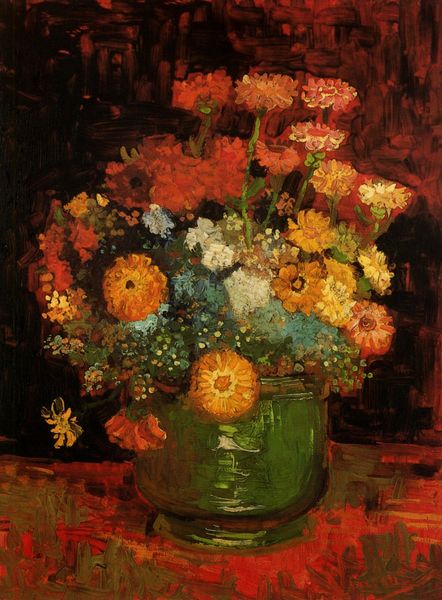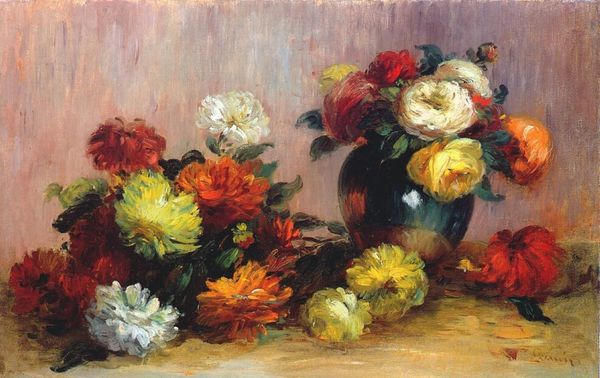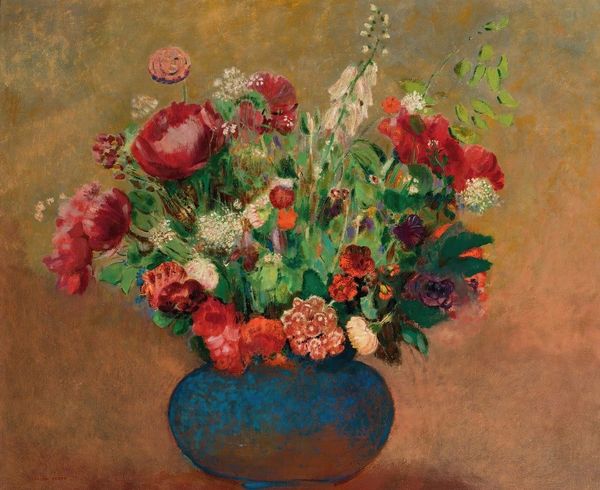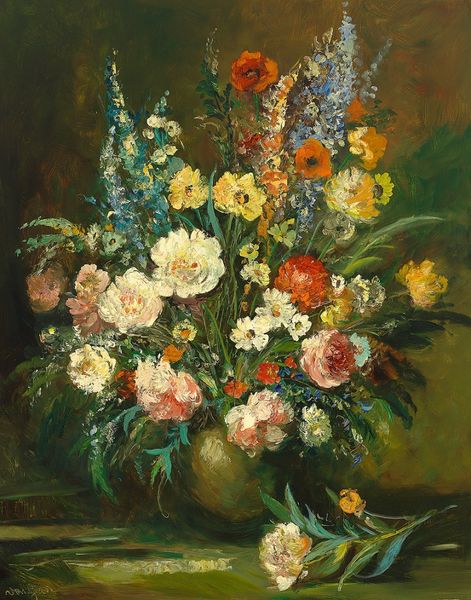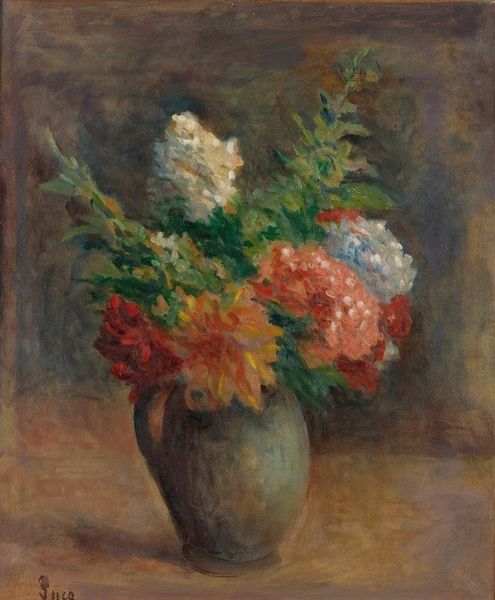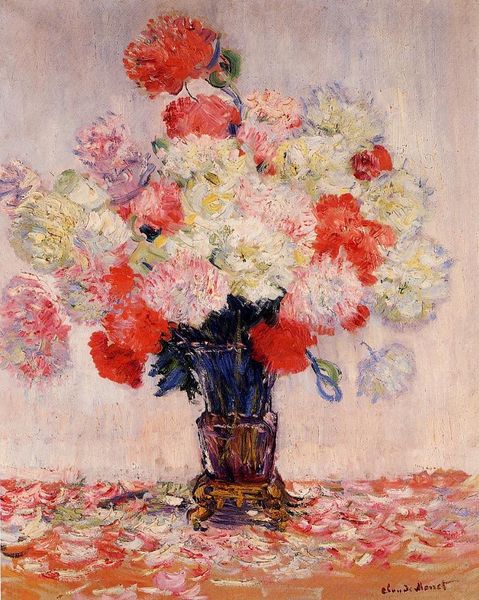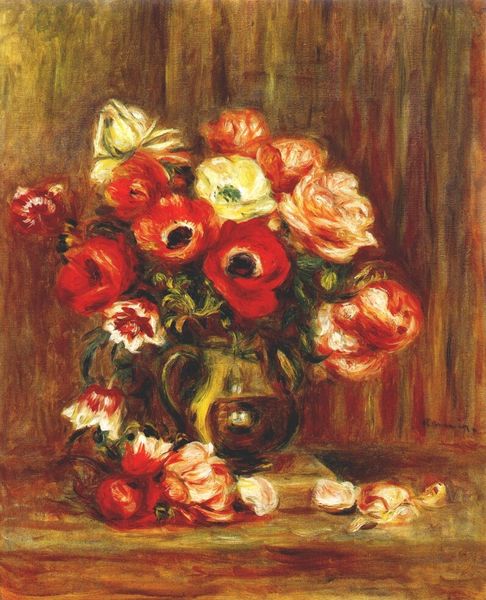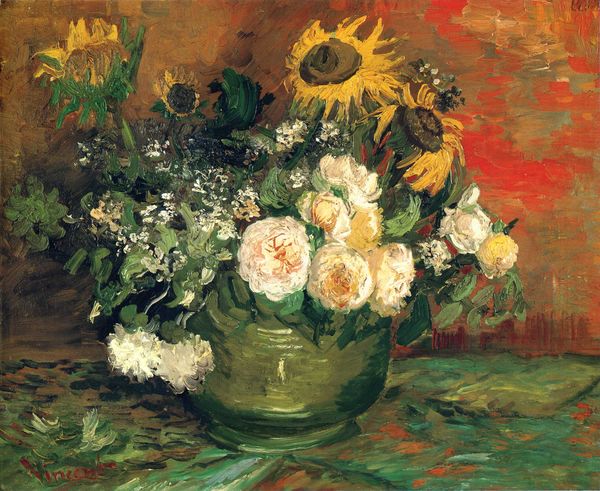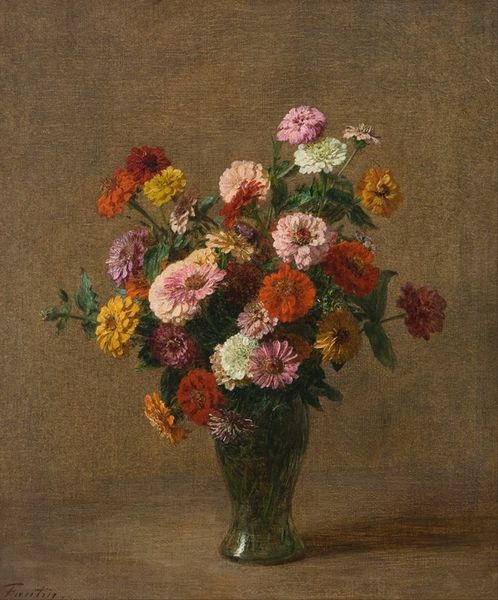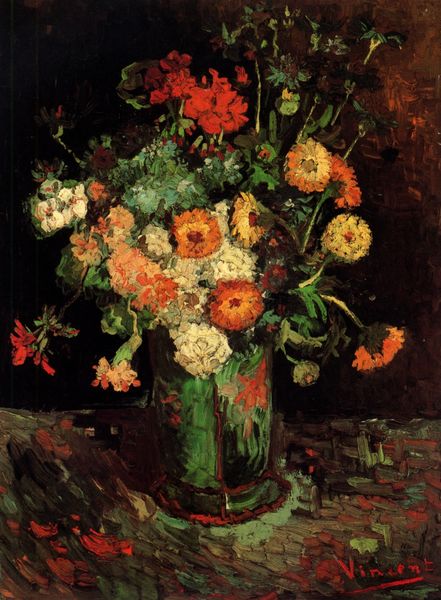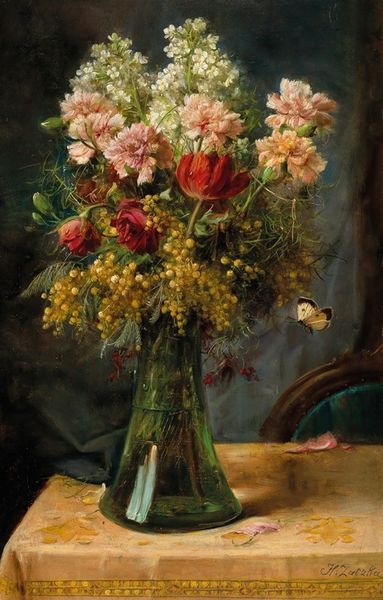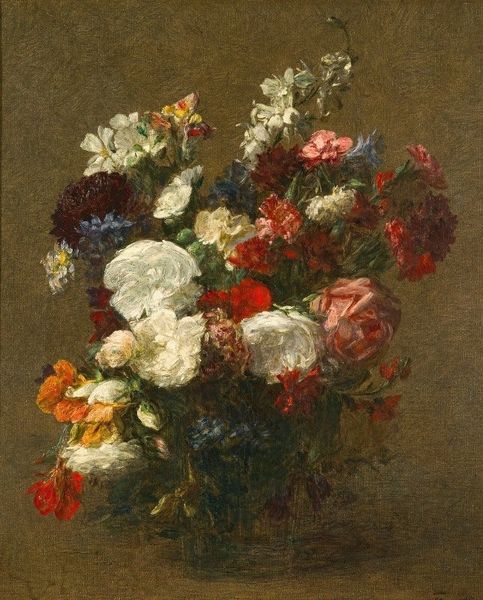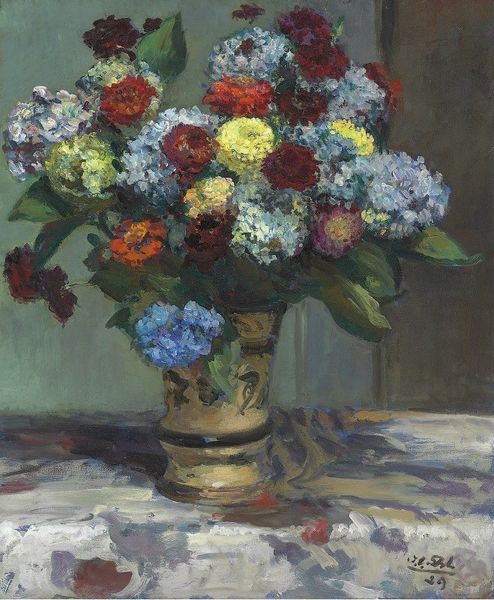
Copyright: Public domain
Curator: Willy Schlobach's "Blumen in Einer Vase," painted in 1926, offers a glimpse into a fascinating period of artistic transition. Editor: My initial reaction is how boldly the paint has been applied – that thick impasto makes me think about the labor behind the image. Look at how the light catches the textures! Curator: Schlobach, though leaning toward Impressionism, seems to be grappling with a more raw, direct mode of expression. Think about what that means in the interwar period, after the grand narratives of pre-war society had crumbled. There was a movement away from idealization towards brutal honesty. Editor: Precisely, and that's apparent even in a seemingly simple floral piece. Consider the production – the farming, the processing of pigments for the oil paint, the canvas preparation, the act of constructing something beautiful with manual work in uncertain economic times. Curator: The composition reflects this too; the bouquet isn’t conventionally beautiful; the blooms are slightly unruly, overflowing from the vase. One could argue this mirrors a society trying to redefine its identity. Flowers, historically symbols of beauty and delicacy, are presented here with an almost defiant vigour. Editor: That reminds me that glass making and painting share techniques despite vast differences in materials: pigment suspension in oil vs. silica manipulation. The refraction of light interests them both! Schlobach also clearly used brushes – a tool with hair sourced originally from animal labor, with each strand working collectively to distribute heavy color on linen! Curator: It is certainly a powerful still life, offering us more than just pretty flowers. It challenges us to consider the historical forces at play in shaping artistic expression. The role of galleries in promoting a style can often have impact in shaping markets that define its perceived value! Editor: Exactly, and paying attention to the means of production offers us alternative pathways into interpreting what this image is and why it endures. I am grateful for these layered interpretations! Curator: Indeed, by examining the cultural currents reflected in "Blumen in Einer Vase," we gain insight into a complex period of transition, offering the modern gallery patron richer connections to our shared global history. Editor: Focusing on its materiality gives me greater insights on that era's lived realities! The beauty in a painting arises often as an interplay of physical labor, skill, historical context, and, finally, human intention.
Comments
No comments
Be the first to comment and join the conversation on the ultimate creative platform.

